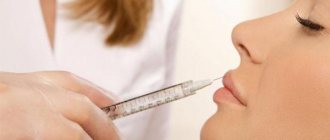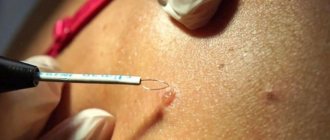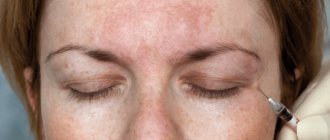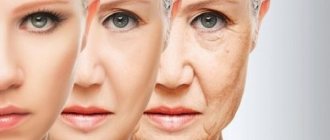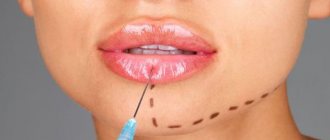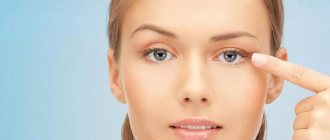Bath, sauna - harm and benefit, indications and contraindications, rules for taking bath procedures
The bathhouse is a traditional place for many people to spend one or more evenings each week.
- Some consider the bath a powerful healing procedure
- Others - relaxation for soul and body
- Still others are a serious risk factor for a number of diseases.
Each of these theories has its own truth, which we will look into in this article. Baths are an active method of thermal exposure of the body surface and respiratory system to high temperatures. The therapeutic effect of bath procedures is aimed at eliminating some functional changes in the body:
- increasing the reserve of the respiratory and cardiovascular systems
- acceleration of microcirculation of blood and lymph
- improvement of immune reactivity.
The type of bath is determined by the specific microclimate of the thermal chamber (steam room):
- A traditional Russian bath is characterized by saturating the steam room air with water vapor, which forms a fog with 100% humidity. The air temperature in a Russian steam room is 40-50 C.
- The Roman bath is heated with dry air, the temperature of which in the tepidarium is 40-45 C, and in the thermal chamber - 60-70 C. Hot air is supplied through holes in the floor or walls.
- Turkish bath - in it the air temperature reaches 40-50 C, the humidity is regulated by heating the water in boilers and often reaches 100%.
- The Finnish sauna differs from all others in its special microclimate: the air temperature reaches 70-100 C, the temperature gradient in the floor and ceiling areas is 60 C, and the relative humidity is within 10-15%.
- Japanese bath - involves washing in barrels with a temperature of 40 and then 60 C. The humidity in the room can also reach 80-100%.
- IR sauna (infrared) - provides air heating to 45-60 C and humidity 45-65%. It is believed that an infrared sauna is beneficial for the body with minimal health risks, which is why many people install this type of bath even in apartments.
The physiological effect of a bath is directly related to air humidity. A steam bath always leads to more significant functional changes and faster overheating than a dry air bath. Due to the inhalation of hot steam, gas exchange and evaporation of sweat are hampered, and a significant load is placed on the pulmonary circulatory system.
The greatest danger posed by the effect of elevated temperatures on the body is the activation of the degeneration of cells into malignant ones in the presence of precancerous diseases, which one may not even be aware of, as well as in the case of a hereditary risk of oncology. Since after 40 years the risk of neoplasms increases significantly, this category of people should definitely not turn the bathhouse into a lifelong hobby.
In this paragraph, we will consider the main aspects of the positive effect of the microclimate of the bathhouse and sauna on a healthy body with strictly dosed temporary exposure agreed with the doctor, as well as the harm caused to the body by bathing procedures.
| Body system | ||
| Heat exchange |
|
|
| Metabolism |
|
|
| Autonomic nervous system |
|
|
| Endocrine glands | Level Up:
| Level Up:
|
| CNS |
|
|
| The cardiovascular system |
|
|
| Respiratory system |
|
|
| Musculoskeletal system |
|
|
At the beginning of this section, we wrote about dosing exposure, which should be taken very seriously. The fine line between the benefits and harm of a sauna and steam bath is precisely in the time period, which many ignore, staying in the steam room for half an hour and breaking useless “records”. It is also important to observe the cyclical nature of the procedure: preparation, temperature exposure, cooling and rest.
Harm from the Finnish sauna and other types of baths is most often associated with non-compliance with the time spent in the heat chamber, neglect of contraindications, and visiting the steam room while intoxicated.
General contraindications:
- Precancerous diseases
- Oncological diseases
- Acute diseases or exacerbation of chronic diseases
- Tuberculosis of any localization
- Hyperthermia
- Children's age is up to 3 years, and steam room - up to 10-12 years
- Very old age (over 75 years old)
|
|
|
|
|
|
|
|
|
|
|
|
|
|
This list of indications does not mean that if you have such a pathology, you can go to the bathhouse without risk. In a good way, the indications for a bath are a state of absolute physical and mental health. Any person should reasonably and realistically measure their capabilities, not be equal to others and not put their health (and sometimes life) at risk for the sake of the desire to prove to someone their incredible ability to withstand high temperatures.
Contraindications to the Russian bath and other types of baths can be continued and continued on an individual basis. There are no absolutely healthy people, there are underexamined ones. There is a lot of truth in this medical joke, so you should carefully weigh the possible harm and dubious benefits of bath procedures.
- on an empty stomach and immediately after eating;
- after intense physical activity;
- after and during drinking alcohol (high risk of dehydration, burns from hot air);
- against the background of psychological stress.
- Before bathing procedures, you should quench your thirst (still mineral water, green tea, water).
- Before entering the thermal chamber, you should take a warm shower and wipe your body dry to create better conditions for sweating and natural thermoregulation.
What not to do after Botox and Dysport: the main “no” for patients
A list of the most important rules of conduct for those who have already had anti-aging injections or are just planning a visit to a cosmetologist.
A good aesthetic result and the absence of complications largely depends on how responsibly the patient behaves in the first hours and days after injections of Botox, Dysport and any similar drugs. What can and cannot be done during this period and how long will the restrictions have to be observed? TecRussia.ru goes into detail:
↑ What are the reasons for medical prohibitions?
The main task of the patient immediately after the procedure is not to interfere with the correct distribution of the toxin in the muscle fibers. To do this, it is enough not to create situations that cause a sharp and/or strong change in pressure and intensity of blood flow in the treated area. Otherwise, the recently administered drug may shift from the target muscle fibers to neighboring ones - this phenomenon is called diffusion and it is fraught with unpleasant consequences: from deterioration of the overall effect of the procedure to serious aesthetic complications, such as drooping of the upper eyelid.
However, scientific studies that would confirm the connection between excessively active blood circulation and the migration of Botox in tissues have not yet been carried out. When giving a patient certain recommendations, doctors are guided to a greater extent by their practical experience, so they can differ significantly from different specialists.
- For example, there is no consensus on exactly how long the restrictions need to be observed: as a rule, the minimum period is 4-6 hours
, but many cosmetologists advise to play it safe and withstand at least 1, and preferably 2 days.
There are also specific nuances and prohibitions associated with taking various medications, performing certain additional procedures, etc. – the above principle does not apply to them, and the deadlines may be completely different – we provide all the details below in the article. But what kind of drug was used - the original Botox, Dysport or one of their analogues - does not matter, the active component is the same everywhere, so all the basic rules are equally applicable for each of them.
↑ What not to do on the first day after injections
- It is undesirable to be in a horizontal position for 4-6 hours, especially face down - strong rushes of blood to the head can affect how the drug behaves.
- For the same reasons, you should avoid sharp and long bends, and try to sleep only on your back, with a couple of pillows under your head.
- For the first day, it is advisable not to touch the treated areas of the face. Only after this time can you make masks and lotions, wash your hair, and use cosmetics.
- Traveling by plane, riding attractions and other activities associated with pressure changes are also prohibited for a couple of days.
↑ Bad habits: are alcohol and smoking compatible with Botox
- The main and for many pleasant information: there is no ban on moderate consumption of alcoholic beverages after the procedure
. Ethanol is not capable of spoiling the aesthetic result of injections or leading to the development of complications; in particular, it does not accelerate blood flow to such an extent as to wash out the botulinum toxin injected into the muscle fibers or otherwise disrupt its action. - But the key word here is “moderate.” A glass of red wine or a couple of glasses of beer will not do any harm, but heavy libations associated with loss of control over your body can be dangerous. Already because because of them you can forget about other, more justified prohibitions: for example, after a stormy party with libations, it is easy to fall asleep with your face buried in a pillow, and this may well lead to unwanted diffusion of the drug.
- At the same time, you should not drink alcohol on the eve of the procedure - this significantly increases the risk of large hematomas and swelling. It is advisable to give up alcohol at least 48 hours before visiting a cosmetologist. Moreover, this applies to any strong drinks, including beer. And even if the label says “0 degrees,” don’t delude yourself: in fact, there is alcohol there, albeit in very small quantities
- As for smoking, doctors are even less categorical. Nicotine does not have any effect on the effect of Botox, so cigarettes, hookah, pipes and any other forms of tobacco use are not prohibited either before or after the procedure. At the same time, it is important to understand that smoking itself causes serious harm to the body - incl. contributes to the accelerated appearance of wrinkles, which we try to get rid of with the help of “beauty injections”. Therefore, those who want to maintain smooth skin in the long term and delay the need for radical surgeries/procedures as much as possible should consider giving up this bad habit completely.
↑ Is it possible to play sports?
For 1-2 days after injections of Botox, Dysport or their analogues, any physical activity is undesirable, including:
- running, race walking;
- fitness, Pilates, stretching, yoga;
- swimming (it is better to avoid swimming pools and open bodies of water until the wounds from injections are completely healed, as there is a risk of infection);
- roller skating, cycling, skiing, skating;
- lifting weights, incl. bodyweight exercises;
- any bending exercises.
The only exception is walking; on the contrary, they are welcome. The reasons are the same: sports and other physical activity accelerate blood flow, which in theory can affect how the drug “gets into” the muscles. There is no clear scientific basis for this, but most doctors prefer not to take risks.
It will be absolutely safe to exercise on the eve of the procedure - just not immediately before it, but several hours in advance, so that the pulse and blood pressure have time to return to normal, otherwise there is a possibility of large hematomas. This may be the best option for those who do not want to disrupt their sports schedule, but are also not ready to risk their facial condition by returning to the gym too early. Having conducted a training session shortly before the injections, and the next one at least 1 day later, we maintain a high pace, but at the same time observe the necessary pause so as not to interfere with the correct “shrinkage” of botulinum toxin.
↑ For those who like it hot
There are a lot of misconceptions regarding exposure to sunlight, solariums, and high temperatures in a bath or sauna after Botox injections. So, many are sure that:
- The effect of ultraviolet radiation on injured areas can lead to the appearance of pigmentation - unattractive dark spots of varying sizes.
- Local heat exposure, as well as increased sweating, accelerates the breakdown of the drug - supposedly the effect of the injections will last not 4-6 months, but much less.
These assumptions are not substantiated or confirmed. However, as in the case of sports, as a precaution it still makes sense to limit any high-temperature exposure for at least 4-6 hours, and preferably for 1 day. During this period it is undesirable:
- sunbathing in the open sun or in a solarium;
- visit a bathhouse, sauna, take a hot bath (a regular warm shower is allowed in any quantity);
- dry your hair with a hairdryer.
But do not forget that, although UV radiation does not directly affect the results of botulinum toxin injections, it itself is extremely destructive for our skin: it leads to the early appearance of wrinkles, pigmentation and other signs of aging. Therefore, regardless of when and what injections were made, you should avoid prolonged exposure to direct sunlight or sessions in a solarium, and use a cream with SPF of 30 or higher as daily protection.
↑ Antibiotics and other drugs
There are several groups of drugs that directly or indirectly relax muscle tissue and thereby enhance the effect of Botox. As a result, it is difficult for the doctor to assess the real condition of the face and select the correct dosage; the risk of getting the effect of overcorrection increases, as well as complications associated with complete or partial paralysis in the injection area. These include:
- Antibiotics of the aminoglycoside series - Gentamicin, Kanamycin, Amikacin, etc.
- Muscle relaxants, tranquilizers - Phenazepam, Mydocalm, Sirdalud.
- B vitamins.
It is not advisable to take them 7-10 days before and the same amount after a session with a cosmetologist. Other groups of medications that often raise questions:
- Tetracyclines - Doxycycline, Unidox, Solutab (amoxicillin), etc. There is a belief that they suppress the effect of botulism toxin and thereby significantly worsen the overall effect of the procedure. There is no scientific evidence for this.
- Other antibiotics, in addition to amnoglycosides, as well as vitamins other than B, also do not interact with Botox in any way, do not affect the result and do not increase the risk of complications/side effects.
- Aminoquinolines (a group of antimalarial drugs) - Hydroxychloroquine, Primaquine, Amodiaquine. They reduce the effectiveness of the injected botulinum toxin, which negates the aesthetic result of the procedure.
- Anticoagulants (Fraxiparin, Heparin, Clexane) and antiplatelet agents (Paracetamol, Aspirin, Curantil). These drugs thin the blood, which leads to large, long-healing bruises and hematomas. It is not advisable to take them the day before or immediately after injections. For the same reason, the procedure is incompatible with analgesics and NSAIDs (Nurofen, Ibuprofen, Diclofenac).
In general, in order to avoid complications and side effects, it is better to inform your cosmetologist in advance about all the drugs that you took shortly before the session or plan to take in the next few days.
↑ What anti-aging procedures can injections be combined with and which cannot?
1. Completely safe - carried out on the same day with Botox or immediately after:
- Any peelings - chemical, laser, mechanical, etc. – but only superficial ones. Deeper exfoliation, when the skin is significantly damaged (with the formation of crusts, exudate, etc.), should be planned either before injections, taking into account the time it will take for complete healing, or a few days to a week after.
- Facial cleansing - in theory, has no effect on the effect of botulinum toxin, but since it is associated with fairly intense mechanical pressure, it makes sense to wait 2-3 days.
- Facial massage is similar to cleansing.
- Masks, decorative and skincare cosmetics should be put aside for 1-2 days until the wounds on the skin are completely healed, so as not to cause an infection. Also, the first time it is important not to rub too much creams and other products into the area where the drug is administered.
- Contour plastic. There are two options: the procedures are done either simultaneously, within one session, or with an interval of ~2 weeks - and in this case you should start with fillers.
- Photo and laser rejuvenation, thermolifting, fractional thermolysis, RF lifting and other hardware procedures that stimulate various layers of the dermis. Contrary to popular belief, increasing blood flow during these manipulations does not cause premature breakdown of Botox, and does not shorten the duration of its effect.
- Plasmolifting. Many fear that the regenerative properties of plasma may enhance the innervation of tissues and muscle fibers, and this will shorten the duration of the toxin. But in reality nothing like this happens, there is nothing to worry about.
2. It’s better to wait a little:
- Mesotherapy, biorevitalization. If they are aimed at a different area of the face, they can be combined, but when the same target area is being treated, it is better to wait a few days, because swelling and inflammation caused by multiple skin lesions can lead to diffusion of the toxin.
- Eyebrow tattoo. Under the influence of Botox, the shape of the eyebrow arches changes, and if permanent makeup is applied in the first 1-2 weeks, the result can be unpredictable.
3. It’s worth putting it off for a long time:
- Myostimulation, magnetic therapy, microcurrent effects, ultrasound therapy. These procedures help increase muscle tone, activate metabolism, and have a neurostimulating effect, thereby quickly neutralizing the effect of botulinum toxin.
- Blepharoplasty, all types of lifts and other plastic surgeries on the face. It is better to carry them out after the effect of the drug has ended, so that the surgeon can assess and correct the real condition of the skin and soft tissues. At the same time, Botox will give excellent results soon after plastic surgery and enhance the overall rejuvenating effect.
↑ Frequently asked questions from patients
Is it possible to do Botox before a trip to the sea?
All three components of a good vacation - an airplane, sunshine and swimming in open water - will not affect the results of the procedure in any way. The only thing is that, as we have already discussed above, it is not advisable to swim until the wounds on the skin have completely healed. Therefore, you can inject, but not right before departure, but about 1 week before. And don't forget about SPF.
Is it safe to get pregnant soon after injections?
During this difficult period, both the woman herself and her unborn baby are as vulnerable as possible. Therefore, injecting a toxin while pregnant or planning to conceive immediately after the procedure is a bad idea. To be completely sure, you should wait at least 3-4 months. For more information, see the article “Botox during pregnancy: pros and cons.”
How soon will it be possible to go for dental treatment?
If the drug was injected into the forehead or between the eyebrows, there are no restrictions (except for a standard pause of 4-6 hours). In cases where the corners of the lips or areas adjacent to the mouth have been treated, it is better to postpone a trip to the dentist for at least 3-4 days: prolonged stay with the head thrown back and mouth open causes overstrain of the muscle fibers in the nasolabial area, which can lead to migration of botulinum toxin and distortion aesthetic result.
How long will it take to get new Botox/Dysport injections?
A reasonable interval between sessions is at least 3-4 months. Less often, the effect will have time to fade away, more often, a cumulative effect may occur, and there is a risk of getting a characteristic “mask face”. In general, this period is quite individual and also depends on the lifestyle, physiological characteristics of the patient and the action of external factors. For more information, see the article “How long does Botox last and how to prolong its effect.”
↑ Remember: the main restrictions after injections
| What not to do | Why | As soon as possible |
| Bend over, take a horizontal position, sleep face down | Affects blood flow and pressure, may lead to drug diffusion | 4-6 hours, preferably a day |
| Fly on a plane | See above | 1-2 days |
| Exercise | See above | Up to 24 hours |
| Tanning, thermal procedures (bath, sauna, etc.) | See above | About a day |
| Use cosmetics, face creams, and swim in the pool and open water. | There is a risk of infection | After complete healing of injection wounds |
| Alcohol, smoking | You should not drink immediately before the procedure, as this can lead to large bruises. | Immediately after the procedure, alcohol is moderate, cigarettes are not prohibited |
| Aminoglycoside antibiotics | Strengthen the effect of botulinum toxin | 1 week before and after the session |
Effect on the body
Bath procedures
High temperatures in the steam room activate the cleansing of the skin, which means more oxygen is supplied.
The heat in the bath trains the sweat and sebaceous glands, a kind of gymnastics that allows you to smooth out existing wrinkles and prevents the appearance of new ones.
As a result:
- blood flow improves;
- the pallor of the face disappears;
- the skin becomes soft and elastic.
The bath procedure normalizes the regeneration of epidermal cells, restores the immune and metabolic functions of the skin. During steaming, dead particles are exfoliated, bacteria and skin secretions are removed.
Botox injections
Is it possible to visit a sauna after biorevitalization?
These substances nourish the skin, and hyaluronic acid effectively restores its water balance and activates the body’s production of its own hyaluronic acid, as well as elastin and collagen. In this case, the change and restoration of the skin structure occurs not only through the introduction of useful substances, but also through the activation of the skin’s own resources.
After a full course of biorevitalization procedures, the following changes occur in the skin:
- Wrinkles disappear;
- The relief of the face is smoothed;
- Improves complexion;
- The skin becomes more elastic.
The introduction of beneficial substances directly into the dermis improves metabolic processes.
This procedure is included in treatment programs:
- scars;
- stretch marks;
- hyperpigmentation;
- loss of turgor;
- anti-aging programs.
The first results can be seen on the skin after the 1st or 2nd procedure. In total, to improve the skin you will need to carry out from 4 to 6 sessions. Biorevitalization takes about 60 minutes. In this case, the procedures are done with a break of two weeks. And the effect of the course will last for 12-18 months.
Biorevitalization can be done at any time of the year. This procedure is carried out not only on the face, but also on the skin in the neck, décolleté and hands.
Side effects can occur both with the injection method and with the laser method, which is considered more gentle.
After biorevitalization, the following may appear on the skin:
- Edema;
- Bruises or bruises;
- Lumps and irregularities (due to uneven distribution of nutrients under the skin);
- Itching;
- Papules, which can increase by 1.5-2 times over time;
- Feeling of dry skin;
- Painful sensations.
All these side effects go away on their own within a few days (maximum 7).
The following side effects may occur in the following cases:
- If the technique of the procedure is violated (which may occur due to the inexperience or inattention of the specialist);
- If the patient fails to comply with the cosmetologist’s recommendations (the patient’s fault);
- Feature of the body.
Photos before and after rejuvenation session
The photo shows the face immediately after the procedure:
Next you can see in the before and after photo the effect that plasma lifting has on the face:
Is it possible to go to the steam room?
A unique and absolutely safe procedure that does not tolerate heat at all. The first and most important thing that a specialist should warn about: after Botox injections, it is strictly forbidden to heat the injection sites. High temperatures contribute to the dilation of blood vessels, which can lead to the penetration of the drug into the blood and neighboring tissues. You need to understand that botulinum is a poison, and exposure to warm air will cause a number of negative reactions.
Attention! For the first 5 days after administering the drug, it is prohibited to: take a hot bath, wash with warm water and dry your hair with a hairdryer.
Restrictions in the first hours after the procedure
Once the procedure is completed, the following restrictions come into force:
- It is forbidden to lie down, sleep, or take a horizontal position in the first 4-5 hours;
- It is undesirable to touch the injection sites once again;
- do not use decorative cosmetics;
- you cannot tilt your head down for 2 days;
- you can’t drink too much alcohol;
- It is prohibited to take medications that affect blood clotting;
- a trip to the sauna or bathhouse can be planned no earlier than 10 days later;
- trips to the solarium, to the beach and spending a long time in the heat under the influence of hot air are also excluded;
- airplane flights are prohibited;
- no sports and other physical activities. loads;
- control (if possible minimize) the amount of liquid you drink.
In the first days, you should also slightly reconsider your diet and limit your consumption:
- liquids, including soups;
- hot dishes;
- food that promotes the active retention or removal of fluid from the body;
- salt and salty foods;
- very spicy food;
- large meals, which involve active jaw work. It is recommended to eat small pieces.
Features of visiting a bathhouse or sauna when taking medications
Article from the series Bath, sauna and health.
Taking certain medications may require you to change your regime for visiting a steam room in a bath or sauna, or to abandon bath procedures.
People taking medications that affect thermoregulation, sweating, cause dehydration (dehydration), increase body temperature or make it difficult to increase cardiac output should be used with caution when visiting the sauna:1
|
Visiting a sauna can be dangerous for people who use alcohol, beta blockade and nitrates.2 Taking sympathomimetics (for example, bronchodilators) can provoke tachycardia and arrhythmia due to heat stress in the sauna. Atropine, tricyclic antidepressants, phenothiazines (neuroleptics, antihistamines, antiarrhythmics) and other antihistamines have anticholinergic effects that disrupt thermoregulation processes and may predispose to heatstroke and fainting in the sauna.
3 Taking diuretics can lead to hypovolemia, hyperosmolarity and decreased sweating. Barbiturates and beta-blockers can also interfere with thermoregulatory mechanisms and reduce heat transfer.4 On the other hand, taking atenolol reduces the increase in heart rate and decrease in systolic blood pressure during sauna use in people with hypertension.
5 However, it is better to take prescribed antihypertensive drugs in advance of visiting the steam room, so as not to enhance the hypotensive effect of the bath on diastolic pressure. You can also use the calcium channel blocker diltiazem as an antihypertensive, which does not potentiate the hypotensive and vasodilatory effects of heat stress in the sauna.6
1 Kukkonen H, Kauppinen K. Health effects and risk of sauna bathing. Int J Circumpolar Health 2006; 65: 195-205
2 Nguyen Y, Naseer N, Frishman WH. Sauna as a therapeutic option for cardiovascular disease. Cardiol Rev. 2004;12:321–4.
3 Knochel JP, Goodman EL. Heat stroke and other forms of hypothermia. Chapter 34 in, Mackowiak P. Fever: Basic Mechanisms and Management. Second Edition. Philadelphia: Lippincott-Raven;1997, pages 437-458.
4 Lee-Chiong T, Stitt J. Disorders of temperature regulation. Comprehensive Therapy. 1995;21(12):697-704.
5 Luurila OJ, Kohvakka A, Sundberg S. Comparison of blood pressure response to heat stress in sauna in young hypertensive patients treated with atenolol and diltiazem. Am J Cardiol. 1989;64:97
6 Luurila OJ, Kohvakka A, Sundberg S. Comparison of blood pressure response to heat stress in sauna in young hypertensive patients treated with atenolol and diltiazem. Am J Cardiol 1989;64:97-99.
Attention! All articles are for informational purposes only and under no circumstances can be used as a guide for diagnosing and treating diseases independently, without the participation of a doctor. Articles may contain errors and inaccuracies and reflect the subjective opinion of the author. If you or someone close to you gets sick: please seek help from a doctor and do not self-medicate!
LIMITATIONS AFTER SPECIFIC TYPES OF OPERATIONAL INTERVENTIONS
Different surgeries will require a longer or shorter recovery time. For example, after surgery on the knee joint, at least 3 months must pass before the risk from swimming decreases to an acceptable level. Likewise, swimming after cosmetic surgery can stretch fresh scars and impair the aesthetic results of the treatment. Restrictions after abdominal operations are also associated with the fact that immersion of the body in water and physical activity lead to an increase in blood pressure, which can provoke internal bleeding. Usually, after abdominal surgery, you need to wait at least 6-8 weeks before starting swimming lessons. After an appendectomy, it is recommended to wait about 2 weeks before swimming. After ophthalmological operations, a pause of at least 4 weeks is required. Also, when swimming in this case, you will need to wear protective glasses. After hip surgery, it is recommended to wait 8 to 12 weeks before swimming. When performing cardiac bypass surgery, you must wait at least 9 months before starting physical activity.
